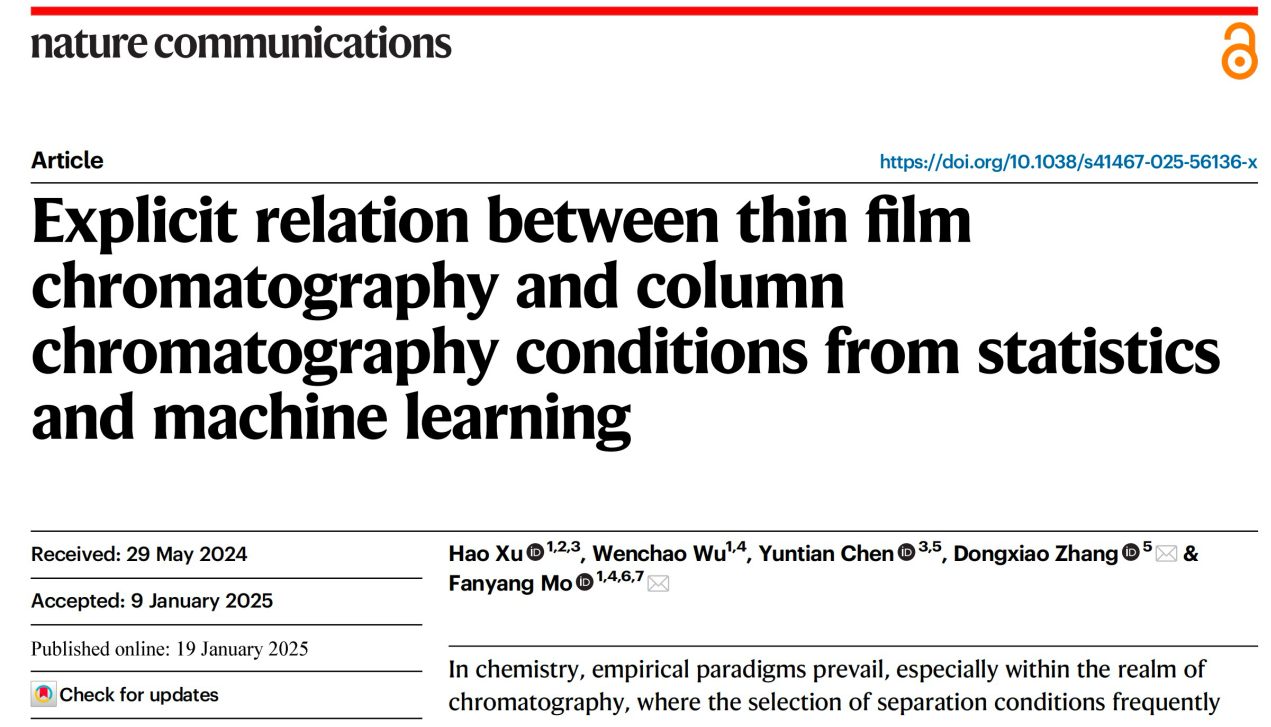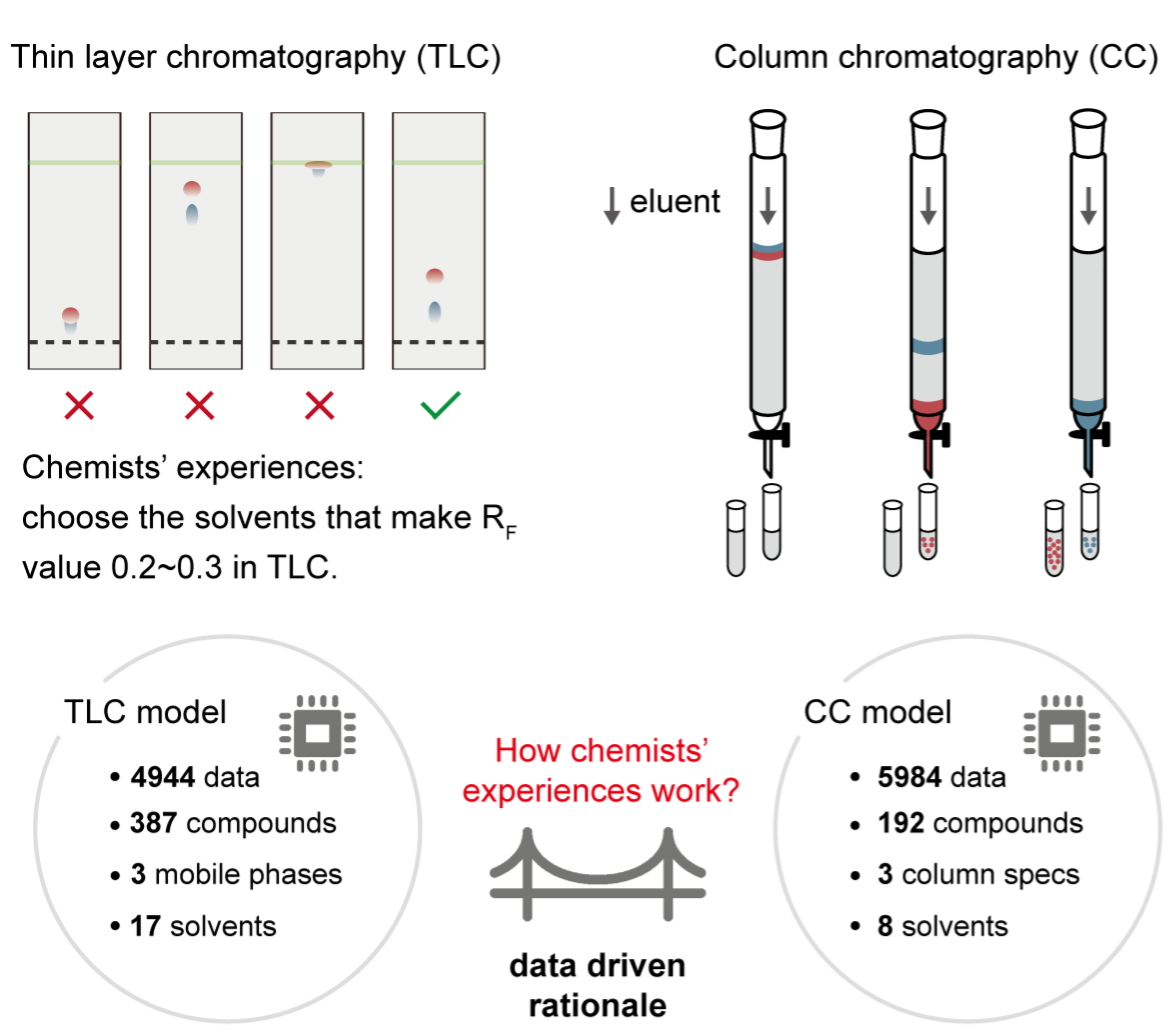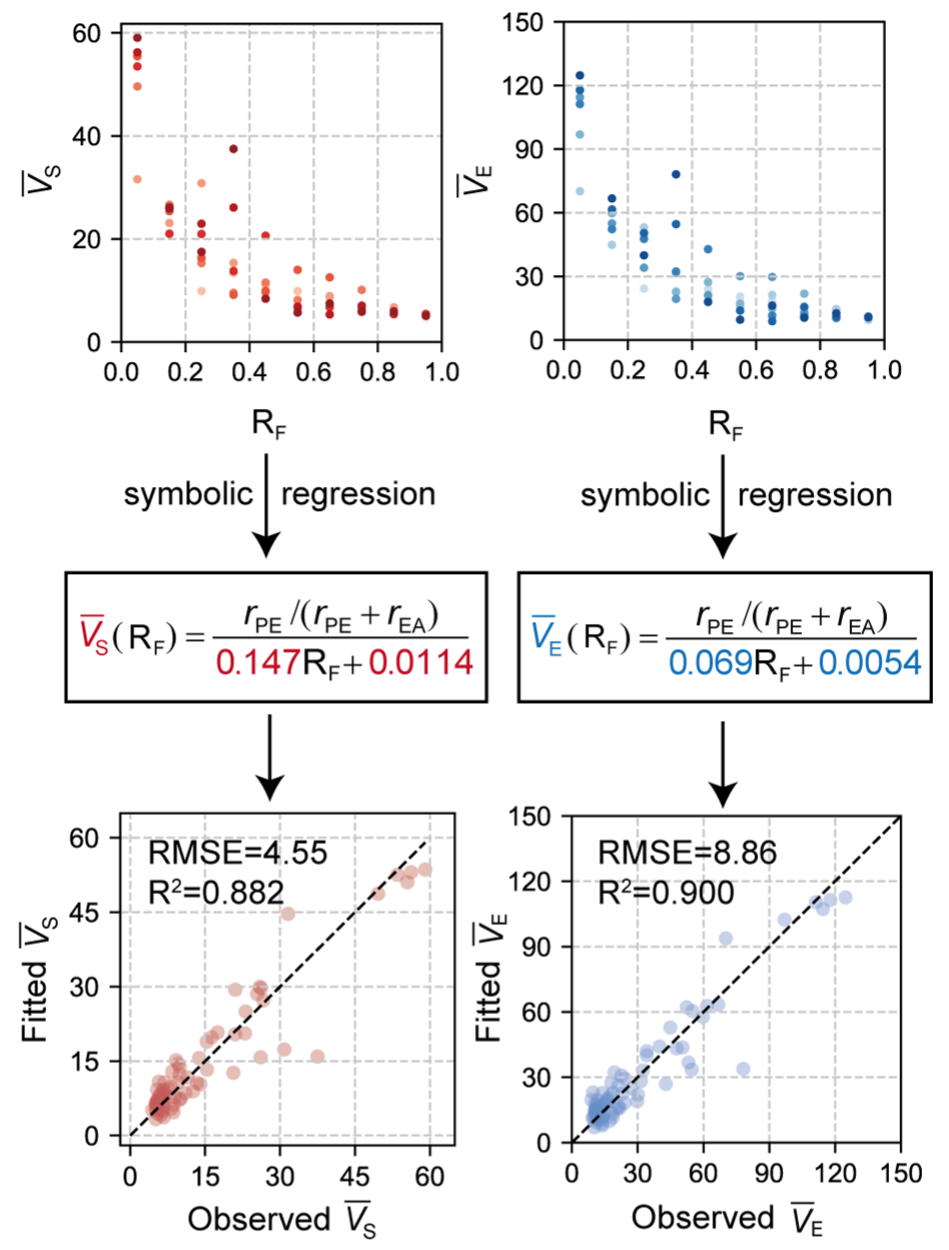Recently, the team led by Fanyang Mo at the School of Advanced Materials (SAM), Peking University Shenzhen Graduate School, in collaboration with Dongxiao Zhang’s group at East China University of Science and Technology, reported a new advancement in the field of “AI for Chromatography.” By integrating statistical methods with machine learning, the researchers for the first time quantitatively revealed the relationship between thin-layer chromatography (TLC) and column chromatography (CC). The study proposed a novel knowledge-discovery approach and established an interpretable formula that transforms chemists’ empirical knowledge into “AI experience.” This work provides a theoretical foundation for determining and optimizing experimental conditions in chromatographic separation. The findings were published in Nature Communications.

Figure 1. The related work was published in Nature Communications on January 19
Both TLC and CC are chromatographic separation techniques widely applied in synthetic chemistry laboratories. In column chromatography, thin-layer chromatography is often used as a preliminary analysis tool, where the retention factor (RF value) reflects the relative polarity of components in a mixture with respect to the mobile phase. In practice, the mobile phase composition and ratio are usually adjusted to ensure the target compound has an Rf value around 0.2–0.3. While this empirical method has proven highly effective, its underlying principle has remained insufficiently clarified, leading to a “knowing what works without knowing why” phenomenon that has hindered deeper understanding of the fundamental chemistry behind chromatographic separations.

Figure 2. Quantifying the relationship between chromatographic expert experience and data-driven insights
To address this scientific question, the research team adopted a data-centric perspective, aiming to directly identify the underlying coupling relationship between TLC and CC from large-scale experimental data and to express it in the form of concise equations. To this end, the team developed an automated column chromatography platform and systematically collected the retention volumes of 192 compounds under different experimental conditions, yielding a total of 5,984 data points. Based on this dataset, the researchers applied machine learning methods to analyze the relationship between the TLC retention factor (RF value) and the CC retention volume, and further employed symbolic regression to derive an explicit mathematical formula.

Figure 3. Formula identification and predictive performance of the relationship between column chromatography retention time and thin-layer chromatography RF value
The study revealed an explicit relationship between the retention volume distribution of compounds in column chromatography and their RF values in thin-layer chromatography. Moreover, through transfer learning, the formula can be extended across chromatographic columns of different specifications. By integrating machine learning approaches, the research harnessed AI’s capability to identify patterns and relationships within scientific datasets, effectively decoding the “black box” of chemical experience. This provides critical theoretical support for understanding the principles of chromatographic separation in experimental chemistry, facilitates the determination of separation conditions, and holds promise for delivering more efficient solutions in related research.
Associate Professor Fanyang Mo of Peking University Shenzhen Graduate School and Professor Dongxiao Zhang of East China University of Science and Technology (Member of the U.S. National Academy of Engineering) are the corresponding authors of this paper. The study was supported by the National Natural Science Foundation of China, the China Postdoctoral Science Foundation, and the AI4S Interdisciplinary Initiative Program of PKUSZ.
